SteelSeries Stratus Review
SteelSeries Stratus
The first 'official' wireless iOS gamepad is just too pricey
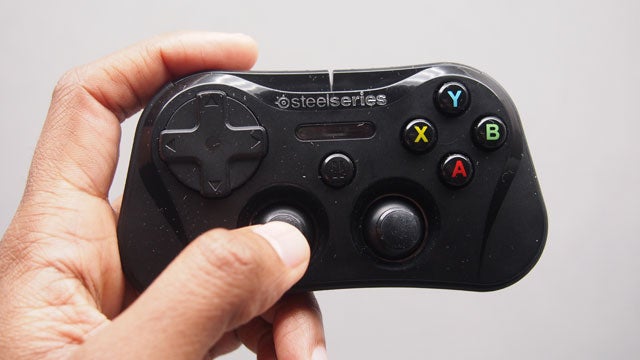
Verdict
Pros
- Fits in your pocket
- Includes analogue sticks
- Good battery life
Cons
- Controls feel cramped
- Too expensive
- Inconsistent control support
Key Specifications
- Review Price: £67.90
What is the SteelSeries Stratus?
The SteelSeries Stratus is a Bluetooth game controller that works with the latest generation iPod Touch, iPhones and iPads. Like the Logitech Powershell, it’s another iOS 7 controller that’s aiming to take advantage of Apple’s move to introduce greater third-party controller support so you don’t have to struggle playing GTA: San Andreas with touchscreen controls.
The Stratus is going to appeal to iPad Air and iPad Mini owners most, although it can fit in the pocket alongside your iPhone with ease. Buty the problem, once again, is the price. £60 is simply too expensive a price to pay for something that’s a bit like a toy.
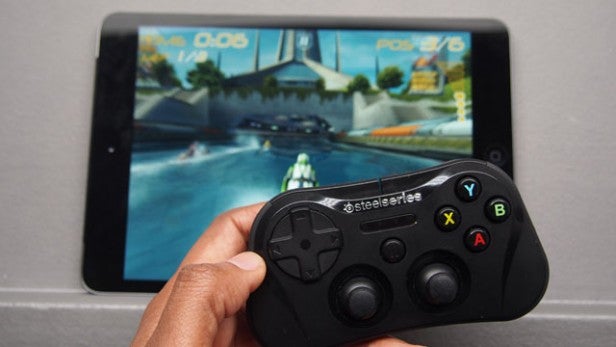
SteelSeries Stratus – Design and Comfort
While the Logitech Powershell is built to fit around an iPhone, the Stratus is a tiny little wireless controller that’s smaller than an iPhone 5. It’s not as slim as the Apple smartphone but measuring in at 60mm wide and weighing in at lightweight 75g, it’s much easier to carry around than Logitech’s iOS 7 controller.
That’s helped in large part by the fact that it’s an all plastic affair. Whether you go for the black or white version, you can’t help thinking that the Stratus resembles something you’d expect to pull out of a Christmas cracker. It’s not entirely cheap and nasty, but then it’s not exactly what you’d be happy with for £67.
Despite its tiny stature, it does manage to cram in a lot of buttons. Up front there’s the pressure sensitive D-Pad, four action buttons with two analogue sticks and a pause button. Just above that you’ll find the red LED light array to indicate when the controller is synced. On the front edge, there’s a set of slim L1 and R1
shoulder buttons with shorter L2 and R2 buttons just below.
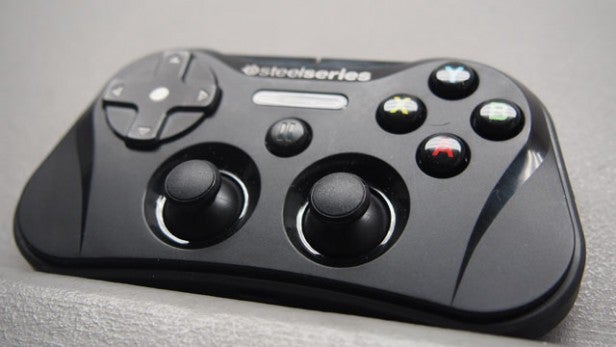
There’s a switch on the side to turn the controller on and a Bluetooth pairing button discreetly hidden around the back. We’d say that layout is more than sufficient to cater for first-person shooters, casual games or retro platformers.
The Stratus also comes with a micro USB charging cable that connects at
the bottom of the controller and a clear lid that fits on the front or
back of the controller to reduce some of the dinkiness when you are using it. Unlike the Powershell, you
can’t use the built-in battery to charge your device but on the plus side, there’s no
ridiculous headphone jack to have to deal with.
Gripping in two hands it’s impossible to not feel like you are holding something that’s not designed for adult hands. It disappears in the palms and just looks a bit childish and cramped to use. The buttons are within easy reach at least and feel nice and comfortable to use, although don’t expect Xbox One or PS4 controller quality here. Positioning the shoulder buttons directly on top of each other means it’s easy to accidentally hit the wrong one on occasions as well.
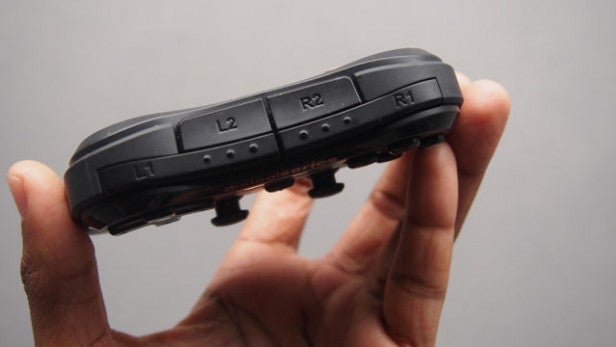
Pricing gripes aside, you can’t really fault the Stratus for portability and that’s going to be a key thing for people who want to have something they can carry around easily. Just be prepared to look a bit silly sitting on a train holding it.
SteelSeries Stratus – Games
Inevitably this is the biggest hurdle for all iOS 7 controller manufacturers. Convincing developers to add support for games they have optimized for touchscreen controls.
Currently, there’s just over 100 games supported for the Stratus and the good news is that there’s plenty of big games on the list. The Walking Dead, Riptide GP2, Real Racing 3, Call of Duty: Strike Team, Dead Trigger 2 and GTA: San Andreas are all games that make the cut.
When you consider the fact that there’s roughly one million apps in the App Store that’s a sounds like a drop in the ocean, but things are improving and there’s at least a diverse range to start you off.
Having the analogue sticks as well as the additional shoulder buttons means it better equipped for console ports like GTA and first person shooters, where some of the more complex controls are just too fiddly for a touchscreen.
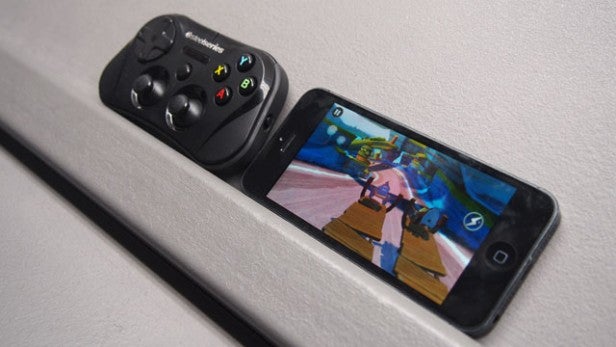
SteelSeries Stratus – Performance
Connecting the Stratus is a hassle-free experience and works just like it does if you are syncing a Bluetooth speaker or headphones to an iPad or iPhone. It does use the older Bluetooth 2.1 standard, but syncing didn’t really suffer because of it. Flick the switch on the side and hold down the Bluetooth syncing button on the back and the flashing LED array on the front will let you know when you are good to go.
We tried the Stratus out with a variety of games from the App Store and had mixed results. Playing Dead Trigger 2, the analogue sticks come into play but disappointingly, there just a little too stiff to pull off the kind of swift changes in movement you need to perform when zombies take you by surprise.
Moving onto a few driving games we gave Asphalt 8 and Angry Birds Go a spin which brings the action buttons and the option to use the D-Pad as alternative to the analogue sticks for steering. The action buttons offer good feedback but are very loud and clicky and are bound to irritate some for longer periods of gaming. For platformers like Limbo, a game that really benefits from physical controls as seen on the PS Vita, it works really well.
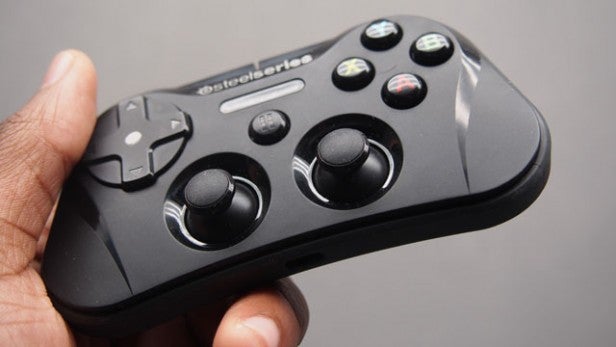
There’s a lack of consistency across the games in the way the controls are embraced. Some work with the menu screen and others don’t. Ultimately, you’ll need to keep the iPad in close quarters for many of them or be prepared to spend a lot of time reaching over to the touchscreen to get going again.
As for the battery life, SteelSeries claims you should be able to get around 10 hours of use out of it before you need to reach for the micro USB cable. Using it over a week for an hour or two a day, remembering to flick the off switch on the side, and it will comfortably make that 10 hours.
It only takes a couple of hours to charge back up to full capacity as well and the LED display up front indicates how much battery is left. Four lights means full and one obviously means you are running low.
The fact it runs on Bluetooth 2.1 and not the battery conserving Bluetooth 4.0 standard is a concern in regards to draining your iPhone but it’s not as severe as we thought it would be. Playing for an hour with an iPhone 5 there was very little drain on the smartphone battery dropping less than 5% from a full 100% charge.
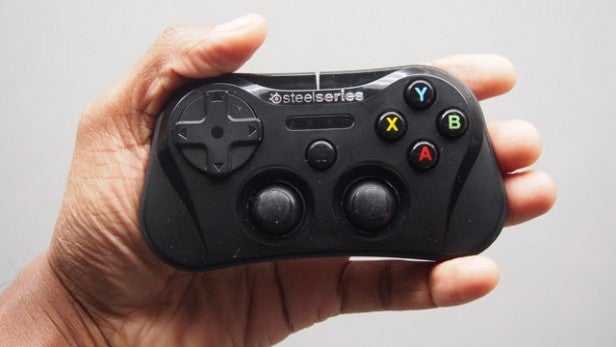
Should I buy the SteelSeries Stratus?
If we had to pick between the SteelSeries Stratus and the Logitech Powershell, the Stratus would edge it but not by much. It’s more portable, fits more buttons including analogue sticks and promises some decent battery life. The small design does have its disadvantages, though like the fact the shoulder buttons are squeezed in and the action buttons are a little cramped.
The reality is that we wouldn’t go for either purely based on the price. The Stratus is around £30 cheaper than the Powershell, but in our eyes it’s not something you can justify paying £60 for. To put things into perspective, you can buy an additional Xbox One controller for less than £40.
Until, companies like Logitech and SteelSeries can offer a way to play games with a controller at a much more affordable price, it’s going to be difficult to recommend them.
Verdict
The SteelSeries Stratus is a controller that fits in your pocket but the price you have to pay to put it there is just too much.


